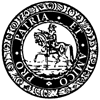The Society of Royal Cumberland Youths: A short History
Formation of the Society
It is claimed that a prominent London ringing Society, known as the London Scholars, rang the bells at Shoreditch church as William Augustus, Duke of Cumberland and second son of George II, passed by on his return from the Battle of Culloden in April 1746. Victory was hailed everywhere and it became popular to adopt the name 'Cumberland' at every opportunity and thus the London Scholars changed their name.
Whether or not the Society of Royal Cumberland Youths (The word 'Royal' was added in the 1870's) descends from the London Scholars, there is no doubt about the foundation of the Society in its present form, which, according to the original Name Book, now housed in the Guildhall Library, was on September 6, 1747.
The Early Society
The lists of members from the first century of the Society's existence shows that at that time it attracted some of the great names in ringing history, such as John Reeves, George Gross and William Shipway, and records of the many first performances achieved at that time still exist in the ringing chambers of City churches.
These men were strong characters who pushed back the early frontiers in change ringing. Changes of society allegiance (and no doubt the dramas that went with them) were commonplace – Gross and Reeves both left the Cumberlands only to return later.
Gross's outstanding achievement, remarkable in its time, was the celebrated peal of 12,000 Oxford Treble Bob Royal at Shoreditch on 27 March, 1784, in 9 hours and 5 minutes, which he conducted. The Society marked the 200th anniversary of this peal with one of 12000 Middlesex Surprise Royal on 27 March, 1984.
Two names dominated the ringing scene for many years in the middle to late nineteenth century – John Cox and Henry Haley. The rivalry between these two men appears to have been quite intense. Again there was some movement into and out of the Society, with Haley taking over as principal conductor between 1843 until 1853 when Cox rejoined the Cumberlands after having temporarily left the Society.
During this time, Haley and four other Cumberlands formed a handbell band and were invited to tour America for 12 months with what was named "The Greatest show on Earth". Whilst on this tour, Haley conducted the first peal in America – Grandsire Triples at Christ Church Philadelphia. When Cox rejoined, he went on to conduct more peals of note for the Society.
In 1896 the Society welcomed its first female member, Mrs George Williams. At this time women were still excluded from ringing societies, which were typically male-only organisations. Mrs Williams was the first lady to ring a peal.
Despite the successes of John Cox and his contemporaries, the Society was not quite so active by the turn of the twentieth century. It would be down to a new set of members to lead it into the twentieth century and through what would prove to be some of the most difficult years for any bellringing society to survive.
The Twentieth Century
Bell ringing suffered during the first half of the twentieth century – not least because of the impact of the two World Wars – and the silencing of church bells during the conflicts. The Society went through a particularly lean period and lost members during both wars.
The Society was revived in the 1950's and 60's in London and has been growing steadily ever since. The Society now has three principal towers – St Martin-in-the Fields (the Society head quarters), Shoreditch and Christ Church Spitalfields, but rings regularly at many of the City churches with rings of bells.
The Cumberlands are not the only active ringing Society in the City. A healthy rivalry and spirit of fellowship exists between the Cumberlands and "the other society", The Ancient Society of College Youths, founded in 1637. The Cumberlands ring regularly at City churches administered by the College Youths, for example St Mary le Bow and St Sepulchre without Newgate. This rivalry keeps the two societies at the forefront of ringing as they continually strive to set the standard in ringing.
The Present Day
The bell ringing landscape has changed dramatically over the last 100 years. Ringing societies are now organised over much bigger geographic areas and ringers are obviously able to move around a lot more. The Society fulfils a critical role in the exercise today and is in good health; enabling ringers from all over the world to come together in pursuit of excellence. It is a Society that provides unique opportunities for ringers to challenge themselves and improve.
Nevertheless, the vast majority of its members would refute any accusation of elitism, and it is worth remembering that most members not only ring regularly at their local churches, but are often in positions of responsibility within local ringing and provide leadership in local ringing societies.
